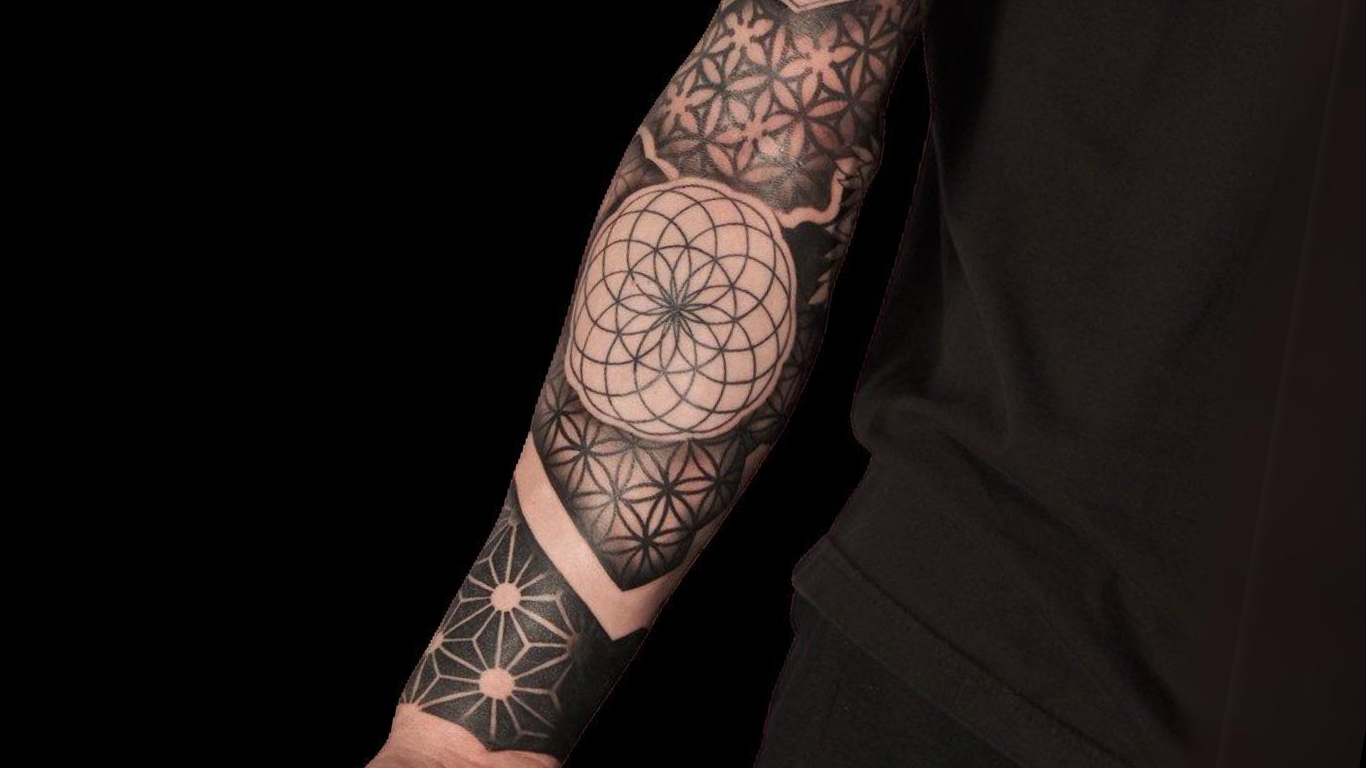Ornamental Tattoos: Beauty and Symbolism
Gothic ornamental bodysuit by Russ Abbott.
Ornamental tattoos have surged in popularity worldwide.
Also known as decorative tattoos, they are characterized by their elaborate patterns and designs. They can range from simple, elegant lines to complex, interwoven masterpieces.
These tattoos often draw inspiration from various cultures and historical periods, incorporating elements like mandalas, scrollwork, and geometric shapes.
Origins of Ornamental Tattoo Style
The origins of ornamental tattoos are deeply rooted in the history of human civilization. Various ancient cultures across the world used decorative body art for ceremonial purposes, as a status symbol, or for aesthetic beauty and style.
For example, ancient Egyptian and Polynesian societies are known for their intricate tattoo designs that held religious and cultural significance.
Polynesian style ornamental half sleeve by George Davis (Keoki).
The Evolution of Ornamental Tattooing
Over centuries, these designs have evolved and been influenced by different artistic traditions, leading to the diverse range of ornamental tattoos seen today.
With the advent of new technology and tools, tattoo artists can now create more precise and intricate designs. The fusion of traditional patterns with contemporary artistry has led to a renaissance in ornamental tattooing, making it a dynamic and ever-evolving form of body art that continues to captivate and inspire.
Symbolism and Meaning
Ornamental tattoos are deeply symbolic, with each pattern or design element holding specific meanings and history.
For example, a mandala in an ornamental tattoo is often seen as a representation of balance and harmony, embodying the idea of the universe's symmetry and order.
Mandala half sleeve by Brian Bennett.
Geometric patterns can symbolize stability and structure, reflecting a sense of grounding and consistency.
These symbolic associations allow individuals to express their beliefs, values, or life experiences.
Popular Designs and Styles
Mandala Tattoos: Mandalas are a popular choice for ornamental tattoos due to their symmetrical beauty and spiritual significance.
Ornamental sleeve with mandala shoulder cap by Luis Hinestroza.
Geometric Patterns: Geometric ornamental tattoos commonly feature repeating shapes and lines, creating a mesmerizing effect.
Colorful geometric ornamental bodysuit by Russ Abbott.
Floral Designs: Flowers can be incorporated into ornamental tattoos for a touch of natural beauty and femininity.
Floral ornamental chest piece with Art Deco elements by Cortney Norton.
Delicate Patterns: Precise linework adds a delicate and elegant touch to the ornamental style.
Delicate, minimalistic ornamental tattoo by Luis Hinestroza.
Placement and Size Considerations
Ornamental tattoos are versatile and can be adapted to various body parts. Common placement areas include:
Back/Posterior: An ornamental back tattoo or bodysuit can be worn as a stunning statement piece.
Gothic ornamental bodysuit by Russ Abbott.
Hands: Ornamental hand tattoos are eye-catching and can feature intricate details.
Ornamental palm tattoo by Lilith Jacobs.
Arms: An ornamental tattoo on the arm can range from a small, subtle design to a full sleeve.
Geometric ornamental sleeve by Luis Hinestroza.
Dark Ornamental Tattoos
Dark ornamental half sleeve by Lilith Jacobs.
For those who prefer a bolder look, dark ornamental tattoo designs offer a striking contrast. These tattoos often use a combination of black ink and heavier shading to enhance and create a more dramatic decorative patterns.
The use of dark tones adds an element of mystery and depth to the skin, making these tattoos a popular choice for those who want to make a bold statement with their personal style.
The Appeal of Small Ornamental Tattoo Designs
Small ornamental tattoo by Fran Rocha.
Small ornamental tattoos are perfect for those seeking a tattoo that is subtle yet elegant in appearance. These designs can be as simple as a small geometric shape or a miniature mandala.
Frequently Asked Questions: Ornamental Tattoos
What are ornamental tattoos?
Ornamental tattoos are decorative designs that feature intricate patterns and details. They can include elements like mandalas, other geometric figures and shapes, floral patterns, and lace.
What is the difference between geometric and Ornamental tattoos?
Geometric tattoos focus on detail, specifically on shapes and patterns with precise lines and symmetry, while ornamental tattoos encompass a broader range of decorative designs, including geometric patterns as well as more fluid and organic elements like floral and lace patterns.
What do ornamental tattoos symbolize?
The symbolism of ornamental tattoos varies depending on the design. For example, mandalas often represent balance and harmony in life, while geometric patterns can symbolize stability and structure.
Are Ornamental tattoos religious?
Ornamental tattoos can have religious or spiritual significance depending on the symbols used in the design. For example, mandalas are often associated with Hinduism and Buddhism. However, many ornamental tattoos are purely decorative and do not have spiritual meanings.
How do I choose an ornamental tattoo design?
It's essential to choose a design that resonates with your personal style and symbolism. Explore various patterns and styles, and consider consulting with a tattoo artist to create a custom design.
Can ornamental tattoos be combined with other tattoo styles?
Yes, ornamental tattoos can be combined with other styles to create personalized designs.













